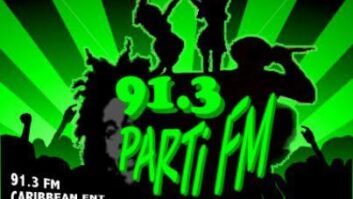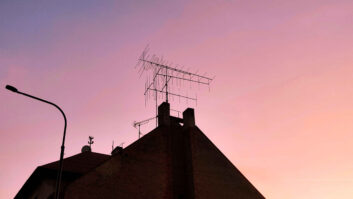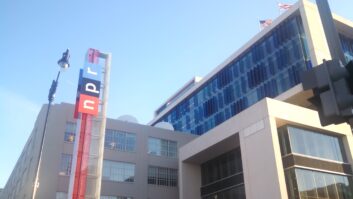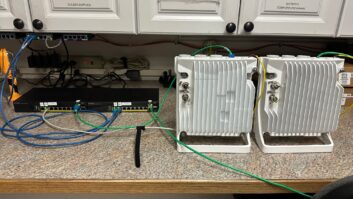“The industry is starting to at least ask questions.”
That’s Ray Miklius talking. He’s vice president of studio systems for Broadcast Electronics; I was on the phone with him recently to learn more about a new offering that attempts to help radio stations manage a part of their business with which they may not be well acquainted: datacasting.
PAD. Real-time weather and traffic. Secondary audio. We all need to get used to talking about this kind of thing. We’ll discuss these topics from various perspectives in coming issues; today, BE’s.
The concept of datacasting “dovetails well with the renewed interest in RBDS (and) dovetails nicely for those doing HD Radio or considering it. It’s on the radar screen,” Miklius said.
Radio has changed, Miklius believes; its leaders now recognize we are in a mature phase of our business cycle. Radio managers are looking for added revenue opportunities.
This is a familiar refrain. But Miklius said there is no real pressure on an industry to do something new when business is going well. When the concept cycle gets old, innovation becomes more attractive.
By his view, radio went through a major push to “do the efficiencies” in the first three or four years of consolidation. Now, broadcasters are looking for ways to differentiate themselves again.
‘Limitless’ opportunities
At BE, he said, “We’ve seen that RBDS is being adopted. We get a lot of calls about how to get data off the AudioVault for this, a module that transcodes that data stream to feed an HD Radio or RBDS encoder,” he said.
“But you can do so much more.” Thus the company recently introduced its Radio Data Dimensions product line, or RDDS.
BE’s list of the possible benefits of datacasting is long: enhanced listener loyalty and station branding. Improved effectiveness of ads and more sponsorship slots. Cross-promotion of personalities and dayparts.
Think weather, gas prices, sports scores, coupon codes, Amber Alerts, phone numbers of clients. Think how you can fight back against satellite radio on the car display.
It’s stuff that radio folks have been talking about for years but that is now more immediately viable thanks to the increased use of RDS as well as the coming HD Radio infrastructure via what Ibiquity is calling Advanced Application Services.
“Given that we’re one of the licensees on the hardware side for HD Radio, if we can expand the software and hardware services we offer for HD Radio, we provide more of a complete package, including enabling tools – software to manage messaging, hardware to encode the HD Radio audio stream and so forth.”
One use, for instance, is to update the maps in car traffic systems.
“Say there’s an accident at I-35 and Sixth. The AAS data let you broadcast that to the navigational system to be overlaid on the map. It’s third-party content – in effect, leased bandwidth – eventually to get to the car receiver.”
In fact the manufacturer participated along with several others – Microspace, NAVTEQ, Panasonic and KSTJ(FM) – in a project this spring at the Ibiquity NAB booth, demonstrating “the first prototype transmission of real-time traffic data using HD Radio technology.”
At that time Miklius said in a statement, “The navigational field is just one of the new data services opening up to broadcasters because of HD Radio. Data opportunities are limitless, but up until now the management of software and broadband links haven’t been available for broadcasters to take advantage of these opportunities. We hope to fill in that gap with these new offerings.”
Data traffic cop
BE’s feeling is that, even if the widespread use of radio data isn’t here yet, stations should build the infrastructure now so the building blocks are in place when receivers are available. It’s a sensible business plan for an automation and transmission provider like BE; but I think it’s also wise for radio managers to be thinking about these things.
Specifically, the BE RDDS is a software suite that allows RDS support for Program Service (PS), Program Type (PTY) and RadioText (RT), enabling info like song title/artist and traffic bulletins. The product uses a browser-based application and it lets a station display promotional material on a rotation or associated with audio.
It also will manage the datacasting capabilities of HD Radio. RDDS will support the AAS including expanded messaging, traffic maps and bulletins, alerting and the Secondary Program Service audio services like Tomorrow Radio.
So the system is essentially a data manager that accommodates the requirements of RDS for analog FM, AAS for HD Radio and Internet streaming clients. The company calls it a “virtual data traffic cop” to manage data coming from an automation system or other data stream generator.
“We’ve also integrated software APIs from Ibiquity to encode the secondary audio channel, manage message injection into the data stream – title artist, traffic bulletins – and provision the digital bandwidth available within the HD stream, for instance to alter the main/data channel arrangement at night.”
A Message Manager function is described as the “AudioVault for messaging.” A message is associated with certain audio or audio ads, stored, then broadcast on a format clock or whenever that audio plays.
“So if a station is sponsoring a concert of Tom Petty, with this application they can query their audio, and whenever a Petty cut comes, they can do title and artist, but also 30 seconds into the song replace the message with ticket/contest info. It’s PAD, near-PAD, and also non-PAD … (like) weather and traffic bulletins during your programming.”
A Web server lets the PD see her station’s messaging via browser. The air staff can bring it up and type in a silent contest to listeners.
Eyeing Detroit
When I spoke to Miklius, the system was shipping for RBDS clients. BE was in the process of working with Ibiquity to provide the secondary audio channel and other bandwidth provisioning services and was doing beta tests in Detroit and Las Vegas.
(You and I aren’t the only ones BE is eyeing with this message. Miklius said carmakers are a key constituency. “We also built this tool to help show off that effort to Detroit – that we get our fair share of the real estate on the screen.”)
What do broadcasters want to know about this approach? Not surprisingly, Miklius says he gets a lot of questions about how to make money on it. He said there’s still a lot of “primary education” to do on the whole datacasting side of the digital radio question.
“If you can get $1 extra every time an audio spot plays – coupon code, Web site, whatever – that might add up to, say, $5,100 a month” for a typical station, Miklius said.
Implementation of the BE system costs about $5,000 with the encoder. “So you could pay that off in a month in a simple system.”
“Sockets” for external content providers are included. “So today you can do traffic bulletins within RDS; you can do messages with directions to the cheapest gas price; you can do ski reports.
“You can generate those in house, or you can subscribe to an external content provider. Part of the system is to get ready to third-party content that you brand as your own.”
And, he said, the relatively low cost of implementation lets stations practice for what’s to come, when receivers improve and your competitors are trying to monetize their own RDS and data offerings.
“It gives you time to get your organization ready and allows you to selectively implement new value to listeners and advertisers. All the trends are in your favor,” Miklius said.
“And oh, by the way, the stuff XM receivers can do, you can do today.”






